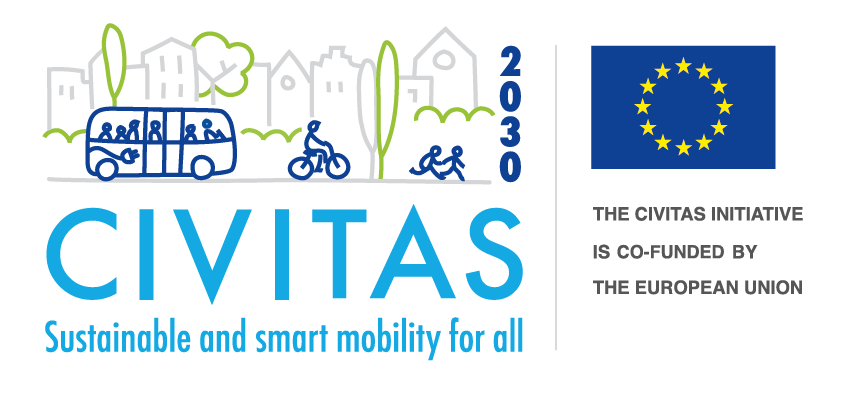The On-Demand economy and its impact on Urban Logistics
The On-Demand economy and its impact on Urban Logistics
By Nacho Sarrió and Lorena Axinte (Bax & Company), and Mari Carmen Jiménez (Miebach Consulting)
Anyone who has ever used their smartphone to request a vehicle, order food from a restaurant or even to buy groceries and have them delivered soon after has contributed to the On-Demand economy.
In a nutshell, the on-demand economy refers to all economic activities that are technology-enabled and offer the consumer access to a product or a service shortly after they request it. The immediacy of the service and the fact that this is done exactly when the user wants or needs it is what gives the concept its name. It is based on instant gratification – the satisfaction a user experiences when they can instantly request a good or service, pay for it, and even follow the route or status of their order all the way to its fulfilment. The on-demand economy has some clear and distinctive characteristics which can, in fact, be very similar or relatable to those of the sharing and the crowdsourced economy.
The sharing economy, on the one hand, allows for better distribution and use of (otherwise) idle resources. For instance, individuals can allow others to use their home, garage, bike, car or any other asset, for-profit or not. Research from Cardiff University shows that the benefits of sharing lie mainly in reduced carbon footprint and resource use, increased access to previously unaffordable or insufficient goods and services, as well as reduced social isolation – all through the increased usage of the shared products or infrastructure. The sharing economy takes place between peers, rather than between businesses and consumers, and can be technology-enabled and/or on-demand, although not necessarily both.
On the other hand, the crowdsourcing economy refers to the engagement of individuals or organisations who contribute with tangible goods, services, ideas and/or skills to provide a service or deliver a product. It is also sometimes referred to as the gig economy and, overall, it relies on a large number of workers with unfixed and flexible schedules in temporary positions who often operate in an on-demand fashion (although not always).
The driver behind the On-Demand economy: e-commerce
Pushed by increasing digitisation and socioeconomic trends, and further enhanced by the COVID-19 pandemic, this particular side of the economy is currently seeing dramatic growth. E-commerce is the fastest-growing driver behind the acceleration of the on-demand economy. In the EU, e-commerce revenue is expected to show a compound annual growth rate (CAGR) of 6.3% between 2019-23 (Statista).
Online purchases are now possible for almost any product or service, offering customers fast and convenient options to fulfil their needs and desires from almost anywhere. Consumers and suppliers are connected through digital platforms, such as a website or an app, which play a crucial role in today’s digitalised economy. These platforms generally facilitate and enable the entire process: from marketplace display, to order placement, payment and transactions, communication, parcel and status tracking, and even feedback collection. Both a result and cause, consumer behaviour is constantly changing and shifting towards prioritising fast, simple and efficient experiences – a behavioural trend that has been growing globally since the emergence of the Internet in the late 1990s.

On-Demand economy: benefits and challenges
The benefits generated by the on-demand economy include customers’ unlimited access to a wide range of products and services, which reduces their need to travel, and their time invested in shopping. For suppliers, addressing potential customers becomes easier through digital means, and the absence of a physical store can reduce rent-related costs. The job market becomes bigger and more flexible, making it possible for workers to find flexible jobs, work desirable hours and gain autonomy. However, the on-demand economy also poses significant challenges, including increasing and unsustainable consumption and waste levels, and precarious working conditions. In many cases, workers are contracted and not fully employed, so they lack social protection and benefits.
The different benefits provided by the platforms (accessibility, simplicity, privacy), plus the convenience and speed of home deliveries, are contributing to the steady growth of the on-demand economy as a whole. The consumer behaviour transition towards immediate access to “everything” has certainly contributed to this growth, and such turn is determined by a general perception of “lack of time”. Studies show that, effectively, the growth experienced by the on-demand economy is mainly due to the consumers’ growing appetite for greater convenience, speed and simplicity. On top of that, the actual increase in smartphone-connected consumers and technology-based solutions for simple and secure online payments, as well as location and tracking services, are also innovations shaping our day-to-day and contributing to such enormous growth of the on-demand economy.

The On-Demand economy in Urban Logistics
As a result, the growth of the on-demand economy is disrupting many sectors, from the most traditional ride-sharing and food delivery, to others such as groceries, music and video, learning and education, healthcare, and of course, logistics. According to the On-demand Logistics Market research Report, the on-demand logistics market revenue is expected to rise from $9,1 billion in 2019 to $75,0 billion by 2030, at a 21,1% CAGR, and this growth may be observed even earlier due to pandemic side-effects.

This unprecedented shift in consumption, where now a consumer is able to buy anything at any time with a single tap, is enabling and demanding existing services to re-invent themselves. As a matter of fact, most new successful on-demand services have made their way by correctly leveraging the aforementioned technology innovations while utilising existing infrastructure, or by being able to implement them on top of a well-functioning, more traditional, service or product. As a result, and after several iterations and improvements, such business models have appeared to outdate the pre-existing ones and satisfy the high-demanding and ever-changing needs of customers, in a cost-effective way that is also efficient and scalable.
More specifically, urban logistics, also commonly referred to as last-mile logistics, is undoubtedly experiencing an increase in size, relevance and presence following the on-demand economy trend. This growth is fuelled by consumers getting used to right here right now delivery. The consumer’s immediate access to products is granted by the correct functioning of the urban logistics system as a whole. However, there are also negative impacts associated: an increase in the number and dispersion of delivery points, which combined with a tendency towards smaller shipment sizes results in a growth of the number of freight trips (1.35B deliveries in the UK by online orders in 2018, 28.8% increase from 2013 – Barclays), is ultimately leading to traffic congestion and CO2 emissions in urban centres.
ULaaDS connection
Piloting innovative solutions for sustainable future on-demand Urban Logistics
Without a doubt, urban and peri-urban areas are experiencing a steadily growing demand for new, sustainable and connected logistics solutions to integrate the requirements of the on-demand economy, ensuring healthy cities for their inhabitants. The ULaaDS project brings together established logistics stakeholders and newcomers to discuss rising challenges with local authorities, jointly assessing and co-creating such novel solutions for a sustainable future: vehicle and infrastructure capacity sharing for people and freight, implementation of consolidation centres and micro hubs, the use of cargo bikes, and even containerised micro-depots.



